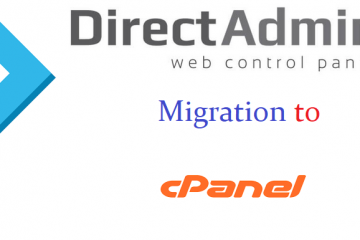Definition:
SSL is a secure socket layer which used to secure the websites and content or data which is present inside the website.
The data is transferred in secure manner between the customer and the owner of the website. So that the third party can’t be able to visit the or stole the data in the website.
In other words. It is a standard protocol used for the transmission of data or any files, documents in secure way over the network.
Secure means:
Here the secure means the data’s are encrypted than only it will transferred over the network. By encryption the third party can’t be able to stole the data or files.
For example: let’s take a home the key is used to lock and unlock the door for security purposes.
In the same way that we lock and unlock doors using a key, encryption makes use of keys to lock and unlock your information.
Unless we have the right key, we will not be able to “open” the information.
What is SSL Certificate?
After the secure connection is established or made,the key is used to encrypt all the transmitted data.
An SSL certificate is a digital computer file (or small piece of code) that is used to perform all those functions. The functions are,
Authentication and Verification:
The SSL certificate has information about the authenticity of certain details regarding the identity of a person, business or website, which it will display to visitors on your website.
The Certificate Authorities are used to determine if an SSL certificate should be issued is most stringent with an Extended Validation (EV) SSL certificate; making it the most trusted SSL certificate available.
Data Encryption:
The SSL certificate also enables encryption, which means that the sensitive information exchanged via the website cannot be intercepted and read by anyone other than the intended recipient.
Each SSL session consists of two keys:
The public key is used to encrypt the information.
The private key is used to decrypt the information and restore it to its original format so that it can be read.
How does the SSL certificate create a secure connection?
A simple diagram shown below , how the website page is opening and and how the web browser helps to read the page.

Browser connects to a web server (website) secured with SSL (https). Browser requests that the server identify itself.
Server sends a copy of its SSL Certificate, including the server’s public key.
Browser checks the certificate root against a list of trusted CAs and that the certificate is unexpired, unrevoked, and that its common name is valid for the website that it is connecting to. If the browser trusts the certificate, it creates, encrypts, and sends back a symmetric session key using the server’s public key.
Server decrypts the symmetric session key using its private key and sends back an acknowledgment encrypted with the session key to start the encrypted session.
Server and Browser now encrypt all transmitted data with the session key.
Different types of SSL Certificates:
There are different types of SSL certificates available,they are as follows,
The first type of SSL certificate is a self-signed certificate.
As the name implies, this is a certificate that is generated for internal purposes and is not issued by a CA. Since the website owner generates their own certificate, it does not hold the same weight as a fully authenticated and verified SSL certificate issued by a CA.
A Domain Validated certificate is considered an entry-level SSL certificate and can be issued quickly.The only verification check performed is to ensure that the applicant owns the domain (website address) where they plan to use the certificate.No additional checks are done to ensure that the owner of the domain is a valid business entity.
A fully authenticated SSL certificate is the first step to true online security and confidence building. Taking slightly longer to issue, these certificates are only granted once the organization passes a number of validation procedures and checks to confirm the existence of the business, the ownership of the domain, and the user’s authority to apply for the certificate.
And some of the SSL Certificates are issued by various web hosting service providers and is given below,
Single domain certificates allow you to secure one fully qualified domain name (FQDN).
Wildcard certificates secure a single domain and unlimited sub domains of that domain.
Multi-domain certificates allow website owners to secure multiple, distinct domains on a one certificate.
For example, a single MDC can be used to secure domain-1.com, domain-2.com, domain-3.co.uk, domain-4.net and so on.
Extended Validation certificates provide the highest levels of security, trust and customer conversion for online businesses. Because of this, EV certificates contain a unique differentiator designed to clearly communicate the trustworthiness of the website to its visitors. Whenever somebody visits a website that uses an EV SSL, the address bar will turn green in major browsers such as Internet Explorer, Firefox and Chrome.
How to know the Website is Secured or having SSL:
SSL certificates create a foundation of trust trust by establishing a secure connection and browsers give visual cues, such as a lock icon or a green bar, to help visitors know when their connection is secure.
A standard website without SSL security displays “http:// ” before the website address in the browser address bar.

However, a website that is secured with a SSL certificate will display “https:// ” before the address. This stands for “Secure HTTP.”

In the above image the Blue box explained the site is secured one and the data's ,files are encrypted.
From the above post you can come to conclusion about the SSL and its importance and how it will give Secure your valuable datas.
Thanks for visiting the post.
To know about your web server mange several no of hits in a day click here.

